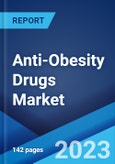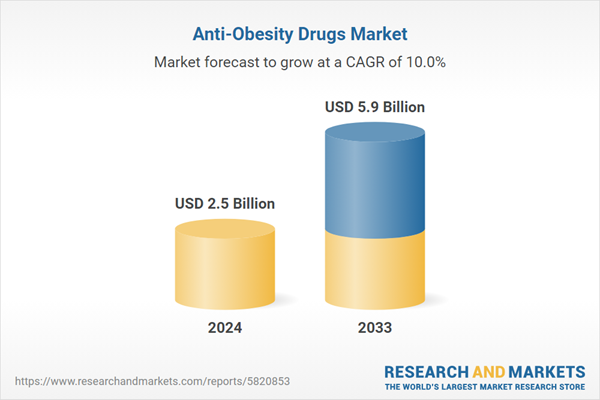Anti-obesity drugs are intended to reduce or control weight and generally medically prescribed only in cases of morbid obesity. They help reduce cravings and control compulsive eating, especially for sweets and fatty, salty, and high-calorie food products. They can also provide independent health benefits, such as controlling blood pressure, harmful lipid levels, waist circumference, sugar levels and nonalcoholic fatty liver disease (NAFLD) and minimize the risk of major cardiovascular diseases (CVDs) and progression of diabetic kidney disease.
Anti-Obesity Drugs Market Trends:
Recent advances in anti-obesity drugs have enabled the potential of attaining clinically significant weight loss among individuals. This, in confluence with the widespread prevalence of obesity on account of sedentary lifestyles, represents one of the key factors creating a positive outlook for the market. In addition, obesity increases the risk of developing type 2 diabetes (T2D), cardiovascular diseases (CVD), and cancer of the esophagus, colon and rectum, liver, gallbladder, pancreas, and kidney. It can also result in numerous psychological, neurological, pulmonary, gastrointestinal, renal, musculoskeletal, and endocrine diseases. Besides this, sleep deprivation, circadian desynchronization, chronic stress, and the rising use of anti-epileptic and psychotropic drugs may further induce weight gain. This, coupled with the increasing number of approvals of anti-obesity medications (AOMs) that help regulate appetite and food cravings, is fueling the growth of the market. Apart from this, weight loss aids in improving the quality of life, mobility, daily function, and psychological well-being of individuals. This, along with the increasing health consciousness, thriving pharmaceutical industry, and the rising focus on the management of diseases closely integrated with excess body weight, is anticipated to stimulate the growth of the market.Market Segmentation:
This report provides an analysis of the key trends in each segment of the global anti-obesity drugs market, along with forecast at the global, regional, and country levels from 2025-2033. The market has been categorized based on drug class, drug type, and distribution channel.Breakup by Drug Class:
- Peripherally Acting Drugs
- Centrally Acting Drugs
Breakup by Drug Type:
- Prescription Drugs
- OTC Drugs
Breakup by Distribution Channel:
- Hospital Pharmacy
- Retail Pharmacy
- Online Pharmacy
Breakup by Region:
- North America
- United States
- Canada
- Asia-Pacific
- China
- Japan
- India
- South Korea
- Australia
- Indonesia
- Others
- Europe
- Germany
- France
- United Kingdom
- Italy
- Spain
- Russia
- Others
- Latin America
- Brazil
- Mexico
- Others
- Middle East and Africa
Competitive Landscape:
The competitive landscape of the industry has also been examined along with the profiles of the key players being Boehringer Ingelheim International GmbH, Currax Pharmaceuticals LLC, Gelesis, GlaxoSmithKline plc, Merck & Co. Inc., Norgine B.V., Novo Nordisk A/S, Pfizer Inc., Rhythm Pharmaceuticals Inc., SHIONOGI & Co. Ltd., Takeda Pharmaceutical Company Limited and Vivus LLC.Key Questions Answered in This Report
1. How big is the anti-obesity drugs market?2. What is the future outlook of anti-obesity drugs market?
3. What are the key factors driving the anti-obesity drugs market?
4. Which region accounts for the largest anti-obesity drugs market share?
5. Which are the leading companies in the global anti-obesity drugs market?
Table of Contents
Companies Mentioned
- Boehringer Ingelheim International GmbH
- Currax Pharmaceuticals LLC
- Gelesis
- GlaxoSmithKline plc
- Merck & Co. Inc.
- Norgine B.V.
- Novo Nordisk A/S
- Pfizer Inc.
- Rhythm Pharmaceuticals Inc.
- SHIONOGI & Co. Ltd.
- Takeda Pharmaceutical Company Limited
- Vivus LLC
Table Information
| Report Attribute | Details |
|---|---|
| No. of Pages | 141 |
| Published | May 2025 |
| Forecast Period | 2024 - 2033 |
| Estimated Market Value ( USD | $ 2.5 Billion |
| Forecasted Market Value ( USD | $ 5.9 Billion |
| Compound Annual Growth Rate | 10.0% |
| Regions Covered | Global |
| No. of Companies Mentioned | 12 |









